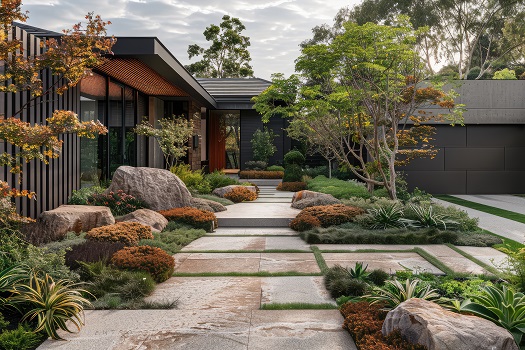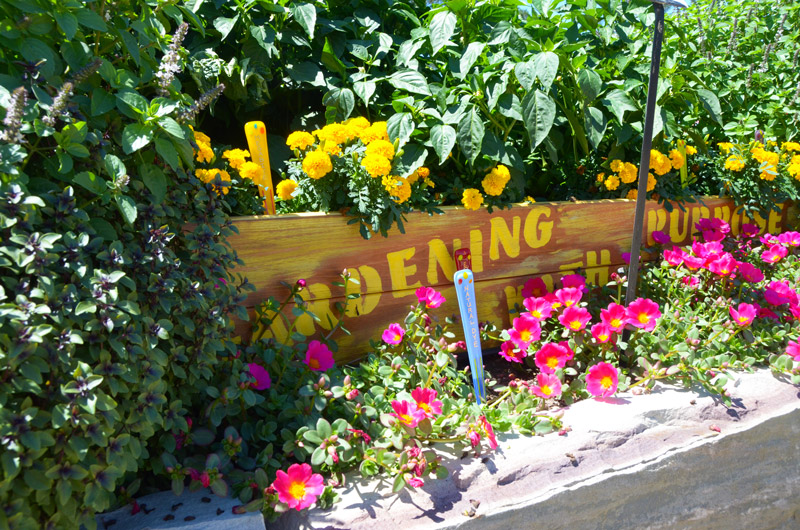The Basic Principles Of Hilton Head Landscapes
Table of ContentsOur Hilton Head Landscapes PDFsThe Main Principles Of Hilton Head Landscapes What Does Hilton Head Landscapes Mean?The Basic Principles Of Hilton Head Landscapes 5 Simple Techniques For Hilton Head Landscapes8 Easy Facts About Hilton Head Landscapes DescribedThe 45-Second Trick For Hilton Head LandscapesWhat Does Hilton Head Landscapes Mean?
Type compatibility is likewise a major element of unity in designone or more strikingly various forms benefit comparison and emphasis, however typically all other kinds ought to have some similarities for a combined look. Texture describes exactly how coarse or fine the surface area of the plant or hardscape product really feels and/or looks.

Instances of plants with coarse appearance include philodendrons, agaves, bromeliads, hollies, hands, and hydrangeas. Characteristics that produce great structure consist of small foliage; slim, strappy leaves (lawns) or high, thin stems; small, thick twigs and tiny branches; long stems (vines); and little, delicate flowers.
Getting The Hilton Head Landscapes To Work
The majority of plants are moderate appearance, in that they can not be defined as having either crude or great appearance. Medium-textured plants act as a history to web link and merge the rugged- and fine-textured plants.

To make a space really feel smaller sized, position the crude appearances along the external boundary and the great structures closest to the audience. The detail of the rugged structure makes the plants appear closer and makes the space feel smaller. The regarded texture of plants can also transform with the range from the plant.
Not known Facts About Hilton Head Landscapes
Vibrant colors raise the comparison and make the appearance appear coarser, while low-key colors can flatten appearance. Hardscape with a rugged texturesuch as really rough rocks and bold, big timberstends to make all plant material show up much more medium distinctive. Designers often create a structure research (Figure 8) theoretically to assist decide the setup of plant materials.
Color in plant product and hardscape adds passion and variety to the landscape. Shade is the most obvious element in the landscape and is normally the emphasis of many home owners; however, it is likewise the most temporary element, normally lasting just a few weeks a year for specific plants.
Hilton Head Landscapes Fundamentals Explained
A basic description of the color wheel includes the 3 key colors of red, blue, and yellow; the three secondary colors (a mix of two primaries) of green, orange, and violet; and 6 tertiary shades (a mix of one surrounding main and additional shade), such as red-orange. Shade concept describes the connection of shades to every other and how they should be used in a composition.

Analogous (in some cases called harmonious) color plans are any kind of three to five colors that are nearby on the shade wheel, such as red, red-orange, orange, yellow-orange, and yellow, or blue, blue-violet, and violet (bluffton landscaping). The colors are associated per other because they generally include two primaries blended to create an additional and two tertiary colors, which implies they share common homes
Complementary shades are usually located naturally in blossoms; a typical pair is yellow and violet. Shade is discovered in the flowers, vegetation, bark, and fruit of plants.
The Facts About Hilton Head Landscapes Revealed
Environment-friendly foliage in all its various tones is the leading color by amount, but various other colors record attention quicker because of their high comparison to the color eco-friendly. Shade is also discovered in structures, rocks, pavers, wood, and furnishings. The majority of colors in all-natural products, such as stone and wood, are commonly soft and often tend to be variations of brown, tan, and pale yellow.
Color is a crucial component for creating interest and range in the landscape. Shades have properties that can affect emotions, spatial perception, light high quality, equilibrium, and focus. One home of color is explained loved one to temperaturecolors show up to be cool or warm and can affect emotions or feelings. Trendy shades often tend to be relaxing and should be used in locations for leisure and tranquility.
9 Easy Facts About Hilton Head Landscapes Described
Trendy shades tend to decline and are perceived as being farther away, making a room feel larger. Shade can also be utilized to record interest and straight views.
For instance, bright yellow, which has the greatest strength, also has a high comparison with all various other colors (usually explained as a "pop" of shade) sites and should be conserved. A small amount of intense shade has as much aesthetic weight as a huge amount of a more suppressed or weak shade.
Analogous (in some cases called harmonious) color design are any kind of three to five colors that are nearby on the shade wheel, such as red, red-orange, orange, yellow-orange, and yellow, or blue, blue-violet, and violet. The shades are relevant per other since they typically include two primaries blended to develop a second and 2 tertiary colors, which suggests they share typical residential or commercial properties.
Some Known Incorrect Statements About Hilton Head Landscapes
Complementary colors are usually discovered naturally in blossoms; an usual set is yellow and violet. Shade is found in the blossoms, vegetation, bark, and fruit of plants.
Eco-friendly vegetation in all its various shades is the leading color by quantity, yet other shades record attention quicker as a result of their high comparison to the shade environment-friendly - landscapers in bluffton sc - https://hilton-head-landscapes.jimdosite.com. Color is also located in buildings, rocks, pavers, wood, and furniture. The majority of shades in all-natural materials, such as stone and wood, are typically soft and tend to be variants of brown, tan, and light yellow
Some Known Questions About Hilton Head Landscapes.
Shade is a vital element for producing passion and selection in the landscape. Colors have buildings that can affect feelings, spatial assumption, light high quality, equilibrium, and focus. One residential or commercial property of color is described about temperaturecolors appear to be cool or warm and can affect emotions or feelings. Awesome colors have a tendency to be soothing and ought to be used in areas for relaxation and peacefulness.
The "temperature" of colors can likewise impact the understanding of distance. Awesome colors tend to recede and are perceived as being further away, making a space feel bigger. Cozy colors often tend to advancement and are perceived as being more detailed, making a room really feel smaller. Color can additionally be made use of to catch interest and direct views.
Intense yellow, which has the greatest intensity, additionally has a high contrast with all other shades (commonly defined as a "pop" of shade) and must be utilized sparingly. A percentage of extreme color has as much visual weight as a huge quantity of a much more controlled or weak shade.
Comments on “The Basic Principles Of Hilton Head Landscapes”